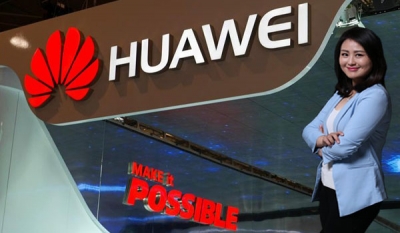We competed on tech specifications and customer service, paying little heed to branding.
Most people outside the industry had never heard of us.
Only in the last decade have we begun making consumer products, and only in the last five years have we sold those products under the Huawei brand name.
Yet in 2015, we shipped over 100 million smartphones, making us the third-largest smartphone company in the world.
But a brand isn’t about how many units you ship; it’s about what people think of you, if they think of you at all.
Brand-building remains a challenge for Huawei, as it does for many other fast-growing companies.
Here are some of the things we’ve learned about how to meet that challenge:
• Nail down the basics, including R&D: Branding gets easier when you make a quality product and provide good customer service in all your markets. Depending on your industry, attaining the required level of quality may require a substantial investment in R&D. Huawei last year invested $9.2 billion, or about 15 percent of our annual sales revenue.
• Work with channel partners: To build a consumer brand through its smartphone business, Huawei stopped making inexpensive, white-label phones for carriers and began to emphasize upmarket products, like the new P9. Initially, we had difficulty persuading European retailers to carry our phones. To give them an incentive, we funded in-store promotions and sales training in Spain and Italy, and invited European retail executives to tour our factories in China.
• Talk about your values: In developed markets, companies must be able to explain what they believe in. One of the first corporate global brand campaigns by a Chinese company, “Huawei Breakthrough,” attempts to do just that, using a series of images to tell consumers who we are, where we came from, and what we stand for.
• Communicate with a variety of influencers: In addition to employees, government bodies, and industry analysts, we’re engaging key opinion leaders: people who, often via social media, shape conversations about everything from smartphones and wearable technology, to cloud computing and the Internet of Things. This year, for example, we invited 10 opinion leaders to the Mobile World Congress in Barcelona, where we organized four days of activities to familiarize them with Huawei, our products, and our culture.
• Don’t get complacent: In the 1920s, the life expectancy of an S&P 500 company was 67 years; today, it is 15. Technology, globalization, and other forces have shaved half a century from the average corporate lifespan. Part of the reason is that, as organizations get bigger, they get slower. Success breeds complacency, and complacency kills success. The antidote to complacency is customer focus. Stay close to your customer, and you won’t veer too far off track.
Brand-building is a challenge for nearly all young, fast-growing companies.
They key is to persevere in your efforts, explaining who you are, what you stand for, and the value you create for your customers.
The article was written for the Economist Group - Marketing Unbound, a community of the world’s most progressive marketers.
By Joy Tan - President of Global Media and Communications, Huawei Technologies






















